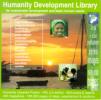 |
Greenstone is a suite of software which has the ability to serve digital library collections and build new collections. It provides a new way of organizing information and publishing it on the Internet or on CD-ROM. Greenstone is produced by the New Zealand Digital Library Project at the University of Waikato, and distributed in cooperation with UNESCO and the Human Info NGO. It is open-source software, available from http://greenstone.org under the terms of the GNU General Public License. |
nzdl.org |
The New Zealand Digital Library website (http://nzdl.org) contains numerous example collections, all created with the Greenstone software, which are publicly available for you to peruse. They exemplify various searching and browsing options, and include collections in Arabic, Chinese, French, Maori, and Spanish, as well as English. There are also some music collections. |
platform |
Greenstone runs on Windows, Unix and Mac OS X. The distribution includes ready-to-use binaries for all versions of Windows, and for Linux and Mac OS X. It also includes complete source code for the system, which can be compiled using Microsoft C++ or gcc. Greenstone works with associated software that is also freely available: the Apache Webserver and PERL. The user interface uses a Web browser: typically Netscape Navigator or Internet Explorer. |

|
Many document collections are distributed on CD-ROM using the Greenstone software. For example, the Humanity Development Library contains 1,230 publications ranging from accounting to water sanitation. It runs on minimal computing facilities such as those typically found in developing countries. The information can be accessed by searching, browsing by subject, browsing by titles, browsing by organisation, browsing a list of how-tos, and by randomly viewing the book covers. |
customisation |
Greenstone is specifically designed to be highly extensible and customisable. New document and metadata formats are accommodated by writing "plugins" (in Perl). Analogously, new metadata browsing structures can be implemented by writing "classifiers." The user interface look-and-feel can be altered using "macros" written in a simple macro language. A Corba protocol allows agents (e.g. in Java) to use all the facilities associated with document collections. Finally, the source code, in C++ and Perl, is available and accessible for modification. |
documentation |
Extensive documentation for the Greenstone software is available. |
mailing list |
There is a mailing list intended primarily for discussions about the Greenstone digital library software. Active users of Greenstone should consider joining the mailing list and contributing to the discussions. To subscribe, go to https://list.scms.waikato.ac.nz/mailman/listinfo/greenstone-users. To send a message to the list, address it to greenstone-users@list.scms.waikato.ac.nz. |
bugs |
We want to ensure that this software works well for you. Please report any bugs to greenstone@cs.waikato.ac.nz |
in the works |
Greenstone 3 is a complete redesign and reimplementation which retains all the advantages of Greenstone 2 (the current version)--for example, it is multilingual, multiplatform, and highly configurable. It incorporates all the features of the existing system, and is backwards compatible: that is, it can build and run existing collections without modification. Written in Java, it is structured as a network of independent modules that communicate using XML: thus it runs in a distributed fashion and can be spread across different servers as necessary. This modular design increases the flexibility and extensibility of Greenstone. Documentation and experimental releases of Greenstone 3 can be downloaded from the Greenstone 3 home page. |
credits |
The Greenstone software is a collaborative effort between many people. Rodger McNab and Stefan Boddie are the principal architects and implementors. Contributions have been made by David Bainbridge, George Buchanan, Hong Chen, Michael Dewsnip, Katherine Don, Elke Duncker, Carl Gutwin, Geoff Holmes, Dana McKay, John McPherson, Craig Nevill-Manning, Dynal Patel, Gordon Paynter, Bernhard Pfahringer, Todd Reed, Bill Rogers, John Thompson, and Stuart Yeates. Other members of the New Zealand Digital Library project provided advice and inspiration in the design of the system: Mark Apperley, Sally Jo Cunningham, Matt Jones, Steve Jones, Te Taka Keegan, Michel Loots, Malika Mahoui, Gary Marsden, Dave Nichols and Lloyd Smith. We would also like to acknowledge all those who have contributed to the GNU-licensed packages included in this distribution: MG, GDBM, PDFTOHTML, PERL, WGET, WVWARE and XLHTML. |
Kia papapounamu te moanakia hora te marino,
may peace and calmness surround you,
|
 |
Greenstone is a semi-precious stone that (like this software) is sourced in New Zealand. In traditional Maori society it was the most highly prized and sought after of all substances. It can absorb and hold wairua, which is a spirit or life force, and is endowed with traditional virtues that make it an appropriate emblem for a public-domain digital library project. Its lustre shows charity; its translucence, honesty; its toughness, courage; and the sharp edge it can take, justice. The carved piece used in the Greenstone Digital Library Software logo is a patu or fighting club, and is a family heirloom of one of our project members. In hand-to-hand combat its delivery is very quick, very accurate, and very complete. We like to think these qualities also apply to our software, the razor sharp edge of the patu symbolizing the leading edge of technology.
New Zealand Digital Library Project
Department of Computer Science,
University of Waikato,
New Zealand